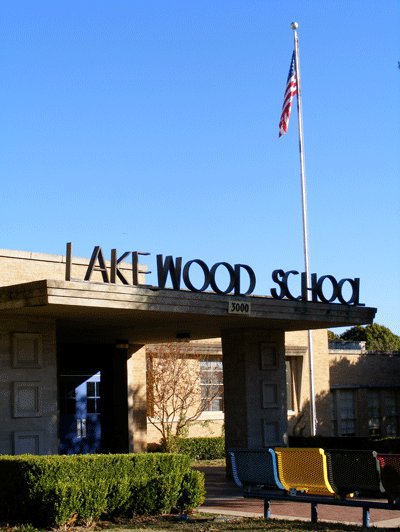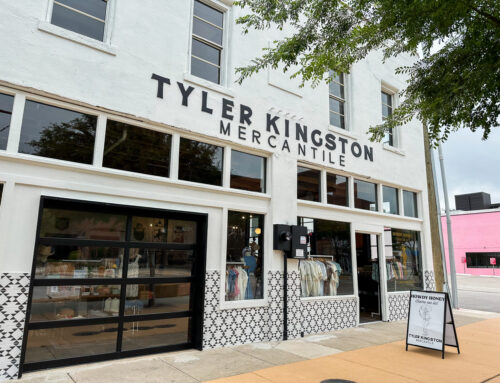The district’s premiere magnet schools are clogged with neighborhood kids. Is it because they’re the best and brightest? The truth is more complicated.
 Even as they came out of Stephanie Elizalde’s mouth, the numbers seemed to surprise her. Dallas ISD’s chief of school leadership was giving trustees a breakdown of the fourth-graders who had been accepted to Uptown’s William B. Travis Academy & Vanguard for the Academically Talented and Gifted.
Even as they came out of Stephanie Elizalde’s mouth, the numbers seemed to surprise her. Dallas ISD’s chief of school leadership was giving trustees a breakdown of the fourth-graders who had been accepted to Uptown’s William B. Travis Academy & Vanguard for the Academically Talented and Gifted.
More than half of the new entrants, Elizalde told trustees, weren’t the district’s most talented and gifted students — they were the brothers and sisters of these students.
Travis opened in fall 2000, and since then, its popularity with neighborhood parents has skyrocketed. The acclaimed magnet school for DISD fourth- through eighth-graders offers rigorous academic curriculum that aims to “address the unique social and emotional needs of the gifted child,” according to its website.
The school has become so sought-after, in fact, that a few years ago, parents successfully campaigned for changes to admission policies that would give preference to siblings of current students. Families should stick together, the parents reasoned, and the board agreed, changing policy so that familial ties now factor in TAG admission decisions, along with students’ GPA, test scores and admission exams.
The consequences of those policy changes are what Elizalde presented to the board this past spring. Of Travis’ 66 available seats for fourth-graders, the board’s policy required that 50 spots go to siblings. At George B. Dealey Montessori, another sought-after kindergarten through eighth-grade magnet school in Preston Hollow, 15 of 33 open seats were claimed by siblings, and at Harry Stone Montessori in southern Dallas, it was 29 of 45.
At Travis, the numbers were particularly striking in terms of how many qualified students were shut out: The 61 students on the waitlist had higher scores than 33 of the 50 siblings who were accepted.
This was — and is — a problem in the eyes of Dan Micciche, the East Dallas trustee who had asked Elizalde to present the numbers.
“A lot of people think it’s just a tiebreaker for kids with exactly the same scores,” Micciche said at the spring briefing. “It’s actually more than that — it’s a preference.”
To some of his colleagues on the board, however, the problem was not a broken admission process but a lack of seats.
“Why not replicate it?” asked trustee Joyce Foreman, who represents Southwest Dallas and favored keeping families together. “Those schools have all of that interest because it’s working.”
At the heart of their debate lay the issue of why, and especially for whom, Dallas ISD’s magnet schools exist.
Are they for the district’s best and brightest, children who may languish at their neighborhood schools but excel in a different academic setting?
Are they for families seeking a different option who want to invest in a single school community?
Are they for students of all ethnicities, classes and backgrounds to mingle together and find equal footing — the reason Dallas’ magnet schools formed in the first place?
The answer, at least in terms of sibling preference, is expected to come from the board in the next few weeks as it reconsiders the sibling policy. The question, however, seems far from being settled.
 East Dallas is a unique area of the school district, one where families take great pride in their neighborhood public schools and simultaneously take full advantage of the other options DISD makes available. A good chunk of students at the district’s top magnet schools come from our neighborhood.
East Dallas is a unique area of the school district, one where families take great pride in their neighborhood public schools and simultaneously take full advantage of the other options DISD makes available. A good chunk of students at the district’s top magnet schools come from our neighborhood.
What’s unique at Travis is the sheer volume of students who come from East Dallas, particularly from Lakewood and Stonewall Jackson elementaries. Last year, Lakewood and Stonewall students claimed one-third of Travis’ seats.
Travis was the final Dallas magnet school to open during the school district’s court-ordered desegregation process, which began in 1971 and lasted 33 years. When the talented and gifted school launched in fall 2000, it had the racial makeup the law required: roughly one-third white, one-third black and one-third Hispanic.
That makeup began to change after 2003, when Dallas ISD was released from federally mandated desegregation. The district, as part of its promise to the courts to continue to diversify its magnet schools, devised a new admissions process that accepted the top applicants from six different areas of town.
Areas later gave way to learning communities, which gave way to high school feeder patterns, but the admission process for magnet schools today essentially is the same as it has been since desegregation: The top 30 percent of applicants are accepted to each magnet school, and then the district awards the remaining 70 percent of spots to each high school attendance zone’s top applicants.
Such a system should yield a roughly even number of students from each area of town at any given magnet school.
It doesn’t.
If qualified students from a particular high school zone don’t apply or decide not to attend, those vacant TAG spots go to the next-highest-ranking students from the pool of district-wide applicants, says Keisha Crowder-Davis, the district’s director of postsecondary success, who oversees the magnet schools.
“I tell everybody, whatever is in the pool is what’s going to come out,” she says. “If we have more students applying from the Bryan Adams feeder pattern, for example, then you can almost bet that more Bryan Adams kids are going to come out of that.”
Add to the mix sibling preference — which trumps both scores and feeder patterns — and you end up with a situation such as the one at Travis.
After desegregation, magnet parents advocated for changes to admission policies that would give preference to siblings of current students. Families should stick together, the parents reasoned, and the district agreed.
“They told us, ‘I need my kids to go to the same school. I can’t drop them off at five different schools and get to work by 8 o’clock,’ ” Crowder-Davis says.
Area private schools use such preference in their admission policies, she says. The board bought into this approach, voting to give siblings an edge when applying to elementary and middle school magnets.
Trustees tweaked the policy again in June 2015 based on the complaint of a Lakewood parent. One of her twins had been accepted to Travis; the other was first on the waitlist because other students’ siblings had taken precedent. The board responded by expanding preference to siblings who apply simultaneously.
After learning the implications of this change, however — that half of accepted applicants at Travis were allowed in by blood rather than brains — Micciche couldn’t let it stand.
“All I really want is an answer to the question: How is it fair to the kid who is denied the opportunity? I never get an answer to that question,” Micciche says.
“Part of the problem is the people being hurt by it don’t know it.”
Micciche has proposed a Dallas ISD policy change that would eliminate sibling preference, instead weighing test scores and geographic locations to determine magnet school admissions. He delayed the originally planned June vote until after the election of a new trustee for District 2, Dustin Marshall, who represents both the Lakewood and Stonewall communities, as well as several affluent areas of Preston Hollow whose residents often pursue spots at Dealey or Travis.
Parents in those communities have strong feelings about sibling preference that often hinge on whether or not they already have children at a magnet school. One candidate in the District 2 trustee June runoff didn’t take a stance on sibling preference (Marshall), and the other — a parent who had children at Travis — disagreed with it.
Mita Havlick brought the sibling preference policy to Micciche’s attention, even before she entered the District 2 race. She had heard Travis Principal Mari Smith bring up concerns at a school meeting about how the tweaked policy had impacted admissions.
“There were kids with a 97, 98 on the wait list,” Havlick says, referring to the 100-point scoring system Travis uses to determine admission. In contrast, a large number of the accepted sibling applicants had scores in the mid- to low-80s.
Havlick’s son, her oldest child, tested into Travis as a sixth-grader after attending Stonewall. She was glad he stayed with his friends throughout elementary school and wanted her daughter to do the same, but her daughter wanted to apply to Travis prior to her fourth-grade year. Havlick and her husband allowed her to apply, on the condition that their daughter make the cut outright, without considering sibling preference.
The purpose of a magnet school, she says, is to give children who have displayed a need for academic rigor the opportunity of a different academic learning environment. The argument for giving preference to siblings is that it creates a greater sense of community, but “to me, that’s why you go to a neighborhood school.”
She recalls being in the main office at Travis and seeing a mother who was there with her daughter’s offer letter. The mother spoke only Spanish, and Havlick understood enough to realize that the mother didn’t know anything about Travis; the daughter had instructed her to go to the school and turn in her letter.
Havlick wonders: How many siblings claimed the spot of young girls like this one?
“They meet all the criteria, and they still can’t get in? What kind of message are we sending those kids?” she asks.
Havlick lost the election to Marshall by 42 votes. She believes her stance on sibling preference affected the outcome.
Havlick says she understands that parents are passionate about their children’s education. She is, too.
“I love my kids and I want them to have the absolute best — but not at the expense of equity of all students,” Havlick says.
 In a way, a magnet school lopsided with East Dallas students solves problems for the district. Lakewood and Stonewall Jackson are both overcrowded elementary schools, so siphoning off 150 or so fourth- and fifth-graders eases the burden. Lakewood has eight classrooms of third-graders but drops to six in fourth-grade and five in fifth-grade. So many Lakewood children attend Travis that it requires two school buses to ship them back every afternoon.
In a way, a magnet school lopsided with East Dallas students solves problems for the district. Lakewood and Stonewall Jackson are both overcrowded elementary schools, so siphoning off 150 or so fourth- and fifth-graders eases the burden. Lakewood has eight classrooms of third-graders but drops to six in fourth-grade and five in fifth-grade. So many Lakewood children attend Travis that it requires two school buses to ship them back every afternoon.
Plus, one of DISD’s explicit goals is to attract the middle class back to its schools. As Elizalde said of magnet school parents at the spring board meeting: “We have lost populations we don’t want to lose. They have options, and they’re choosing DISD.”
That’s the population the board is catering to with this policy — middle- and upper-class parents who likely have the option to send their kids to private schools. These are the families who dominate the district’s top magnet schools, and the trustees, as stated in one of their goals this year, are eager to keep them in DISD.
Micciche also believes in the power of middle-class parents and the importance of schools that attract them.
“When you have an active PTA and parents who are active in the school, they lift the whole school up,” he says. “They contribute to the success not only of their own children but all the children in the school. They supplement the educational and extracurricular activities that go on in the school, and it makes a huge difference.”
That statement, however, was made in reference to Alex Sanger Elementary, a 68 percent Hispanic and 81 percent economically disadvantaged neighborhood school in East Dallas that is gaining traction with middle-class families.
By comparison, Travis is 58 percent white and 20 percent economically disadvantaged. It’s also full of students and families who compete to attend the school, and has top tier educators and additional resources due to its magnet status.
Interestingly, taking away sibling preference altogether may not significantly alter Travis’ population. On the waiting list last year behind 30 accepted Lakewood and Stonewall students, many of them siblings, were another 26 Lakewood and Stonewall students, none of them siblings.
In contrast, 111 of the district’s 152 elementary schools didn’t send a single fourth- or fifth-grader to Travis last year. This year’s incoming class of fourth-graders represented only 28 home schools.
That number increased to 32 when Elizalde made the decision over the summer to admit half the students on the waiting list. It was a stopgap measure until the board weighs in with an official vote. That decision ballooned the school’s population from roughly 400 to 500, which eliminated the possibility of future students testing in as sixth-graders — a longstanding Travis tradition that tends to cast a wider net than its fourth-grade applicants.
The dynamics that led to Travis’ present-day make-up aren’t black and white. It’s a complex issue that can’t be solved with a simple policy change, and the conclusion could have a large impact on Dallas ISD’s future and how the district is perceived with middle-class families.
“A magnet school should be a meritocracy,” Havlick says. “They are coveted spots, and to reserve them because of birthright, it’s not equitable.”
Oak Cliff and West Dallas DISD Trustee Audrey Pinkerton will hold a town hall tonight, Oct. 12, 6:30-8 p.m. at Sidney Lanier Expressive Arts Vanguard to discuss sibling preference, with DISD administrators from the magnet program making a presentation regarding magnet schools.







